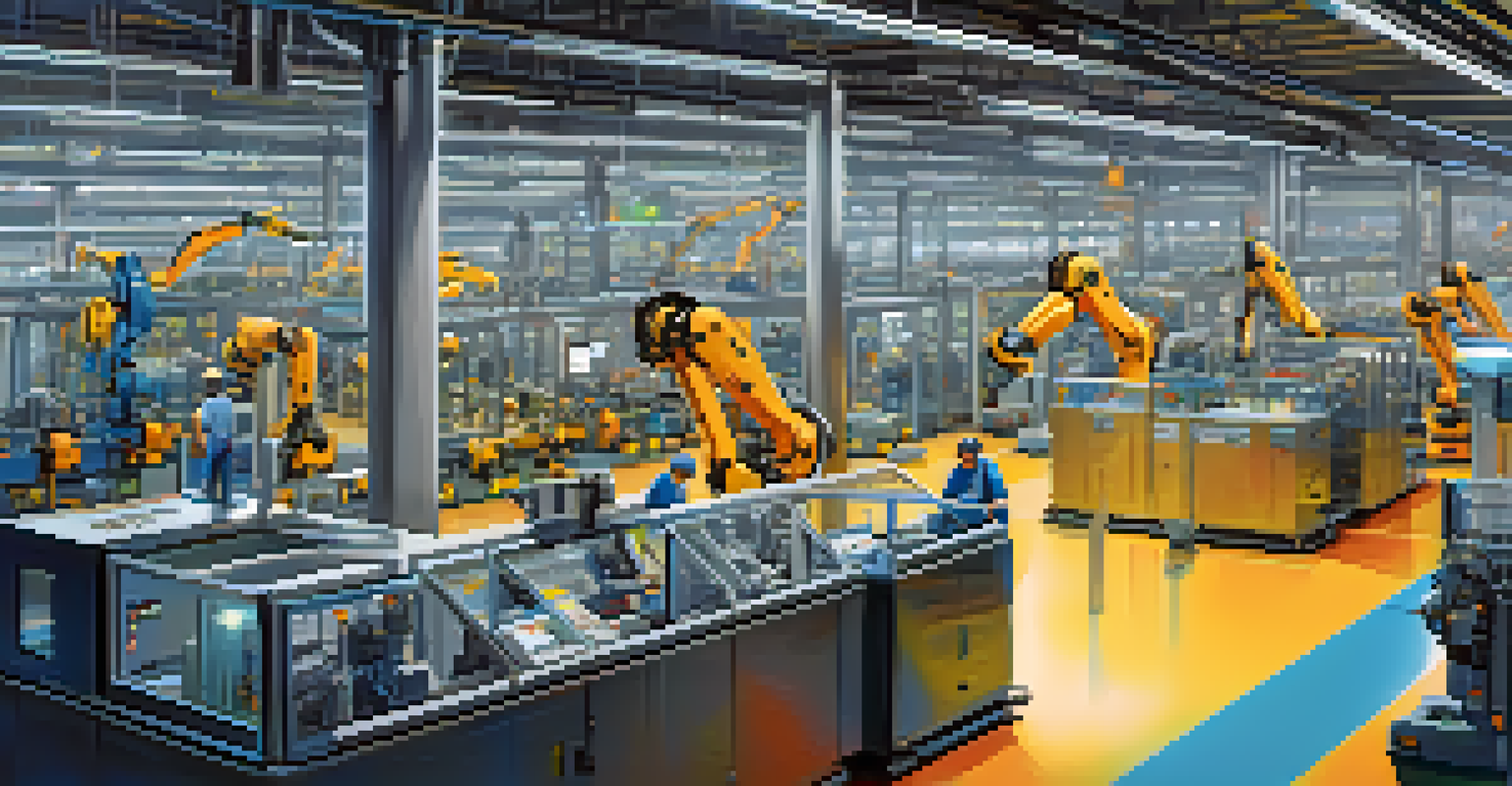Top Industries Benefiting from Edge Computing Solutions

Healthcare: Faster Data Processing for Better Patient Care
Edge computing is revolutionizing the healthcare sector by enabling real-time data processing. This allows medical professionals to access patient information instantly, improving decision-making during critical situations. For example, wearable health devices can send data directly to healthcare providers, ensuring timely interventions.
The future of healthcare is not just about better technology; it's about using technology to improve people’s lives.
Moreover, edge computing minimizes latency, which is crucial for applications like telemedicine and remote surgeries. By processing data closer to where it is generated, healthcare systems can function more efficiently and effectively. This means less waiting and better outcomes for patients.
As healthcare continues to embrace technology, edge computing will play a vital role in enhancing patient experiences and operational efficiency. The ability to analyze and act on data rapidly opens new doors for innovative treatments and better healthcare management.
Manufacturing: Streamlining Operations and Enhancing Productivity
In the manufacturing industry, edge computing is a game changer, enabling smarter factories. By processing data from machinery on-site, manufacturers can monitor equipment performance in real-time, predicting failures before they happen. This proactive approach minimizes downtime and boosts overall productivity.

Additionally, with the rise of IoT devices, edge computing allows for seamless communication between machines and systems. This interconnectedness leads to more efficient workflows and reduced operational costs. For instance, automated systems can adjust production rates based on demand, optimizing resource use.
Edge Computing Enhances Healthcare
Real-time data processing improves medical decision-making and patient care through instant access to information.
As manufacturers continue to adopt edge solutions, they are not only improving efficiency but also enhancing the quality of their products. This shift towards smarter manufacturing practices exemplifies how edge computing can redefine industry standards and expectations.
Retail: Enhancing Customer Experience Through Real-Time Insights
Retailers are increasingly leveraging edge computing to enhance customer experiences. By analyzing data at the edge, businesses can gain insights into shopping behaviors and preferences in real-time. This allows for personalized marketing strategies and tailored promotions that resonate with customers.
In a world where every second counts, edge computing can mean the difference between success and failure.
Moreover, edge computing helps retailers optimize inventory management. By processing data from various sources such as point-of-sale systems and online orders, businesses can ensure they have the right products available at the right time. This not only improves sales but also reduces waste and improves customer satisfaction.
As the retail landscape evolves, edge computing will be crucial for maintaining competitiveness. By embracing these technologies, retailers can create a more engaging and efficient shopping environment that meets the expectations of today's consumers.
Transportation: Improving Safety and Efficiency on the Road
The transportation industry is experiencing significant benefits from edge computing solutions, particularly in enhancing safety and efficiency. By processing data from vehicles and infrastructure at the edge, companies can monitor traffic conditions and respond to incidents in real-time. This leads to quicker response times and safer roads.
Additionally, edge computing enables smart logistics and fleet management. Companies can track vehicle locations, optimize routes, and reduce fuel consumption, all while ensuring timely deliveries. For example, a delivery service can reroute drivers based on current traffic conditions, improving overall efficiency.
Manufacturing Boosts Efficiency
Smart factories utilize edge computing to monitor equipment performance and optimize production, reducing downtime.
As transportation networks become more interconnected, the role of edge computing will only grow. The ability to analyze data on the fly is crucial for building smarter, safer, and more efficient transportation systems.
Energy: Optimizing Resources with Real-Time Monitoring
The energy sector is harnessing the power of edge computing to optimize resource management and improve efficiency. By collecting and analyzing data from smart grids and renewable energy sources at the edge, companies can make informed decisions about energy distribution. This leads to reduced waste and enhanced sustainability.
Real-time monitoring of energy consumption also allows for better demand response strategies. Utilities can adjust supply based on real-time data, ensuring a stable energy flow and reducing the risk of outages. For instance, during peak times, energy providers can shift resources to meet demand dynamically.
As the world moves towards more sustainable energy solutions, edge computing will be essential for optimizing operations and reducing environmental impact. This shift not only benefits energy companies but also contributes to a more sustainable future for all.
Telecommunications: Enhancing Connectivity with Edge Solutions
Telecommunications is another industry experiencing significant advantages from edge computing. By decentralizing data processing, telecom companies can deliver faster services and improve connectivity. This is especially important as demand for high-speed internet and mobile services continues to grow.
Edge computing enables telecom providers to manage network traffic more efficiently, reducing latency and enhancing user experiences. For instance, content delivery networks can cache data closer to users, resulting in quicker load times for websites and applications.
Retail Personalizes Customer Experience
Edge computing allows retailers to analyze shopping behaviors in real-time, enabling tailored marketing strategies.
As 5G technology becomes more prevalent, the role of edge computing in telecommunications will be crucial. By leveraging edge solutions, companies can ensure they meet the increasing demands of consumers and businesses for reliable and fast connectivity.
Agriculture: Modernizing Farming with Smart Technologies
Edge computing is transforming the agriculture industry by introducing smart farming techniques. By utilizing data from sensors and IoT devices, farmers can monitor crop health, soil conditions, and weather patterns in real-time. This information enables them to make informed decisions, ultimately leading to better yields.
Moreover, edge computing helps optimize resource usage in agriculture. Farmers can analyze data on water usage and fertilizer application, ensuring that resources are used efficiently. For example, precision agriculture techniques allow for targeted irrigation, reducing waste and conserving water.

As agriculture continues to embrace technology, edge computing will play a pivotal role in modernizing farming practices. By leveraging real-time data, farmers can enhance productivity and sustainability, paving the way for a more efficient agricultural future.
Finance: Securing Transactions with Real-Time Data Processing
The finance industry is reaping the rewards of edge computing, particularly in enhancing security and transaction speeds. By processing data at the edge, financial institutions can detect and respond to fraudulent transactions in real-time. This not only protects customers but also improves trust in digital banking systems.
Additionally, edge computing enables faster processing of financial transactions. By minimizing latency, banks can provide customers with instantaneous access to their accounts and services. For instance, peer-to-peer payment systems can operate more efficiently with edge solutions, ensuring smooth transactions.
As the financial landscape evolves with digital innovations, the importance of edge computing will only increase. By embracing these technologies, financial institutions can enhance security, improve customer experiences, and stay ahead in a competitive market.